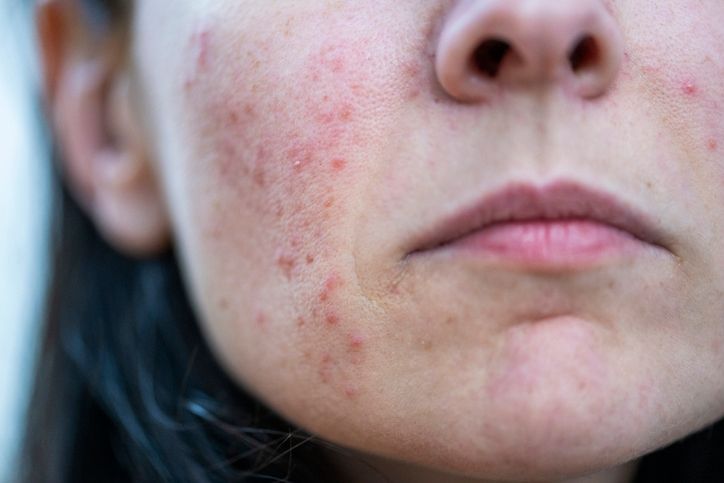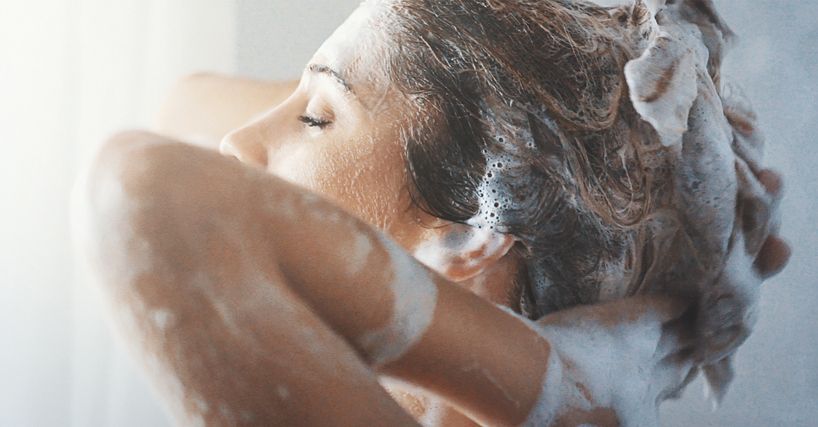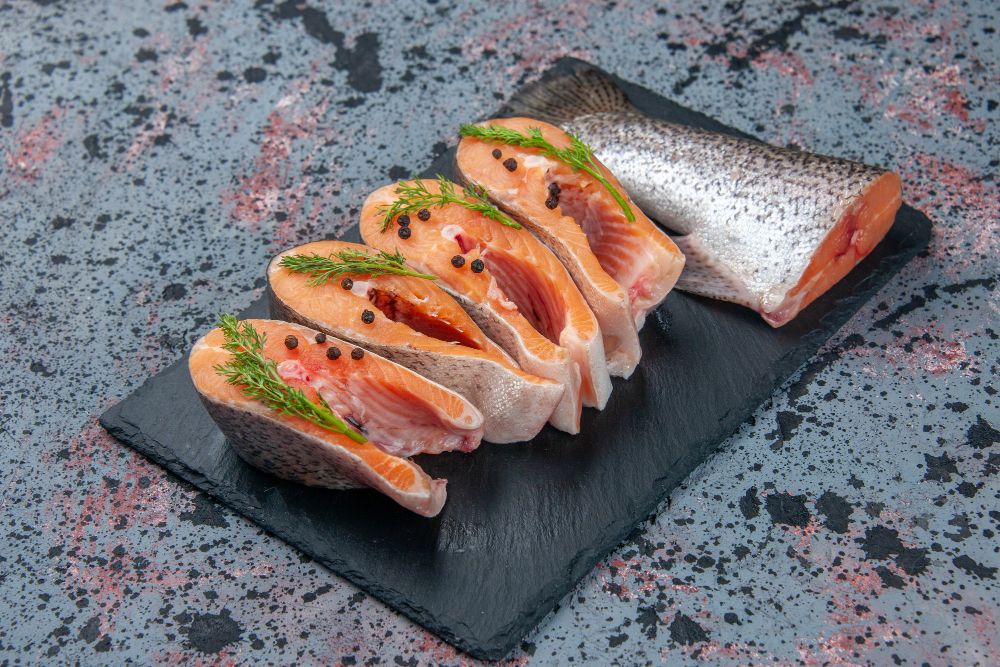
Author: Natalie Ng|Updated: 13 May 2025
Your daily hair care routine plays a bigger role in scalp health than you might think. Certain habits—like using strong shampoos too often, piling on heavy hair products, or skipping a rinse after workouts—can lead to clogged pores and acne breakouts along the scalp. Add in things like not cleaning your brush or washing your hair incorrectly, and the buildup can trigger scalp pimples, irritation, and painful bumps. A lot of this comes down to how hair products, dead skin cells, and excess oil affect your hair follicles and sebaceous glands. These are common causes behind scalp acne symptoms like inflamed or swollen bumps, oily hair, or scaly patches. And if these issues aren’t handled properly, they can lead to persistent acne, scalp folliculitis, or even hair loss over time. Spotting the causes early can make a real difference in preventing scalp acne. Keep reading to learn what habits might be working against you—and how to change them without overcomplicating your hair care routine.

Overwashing and Harsh Shampoo Products
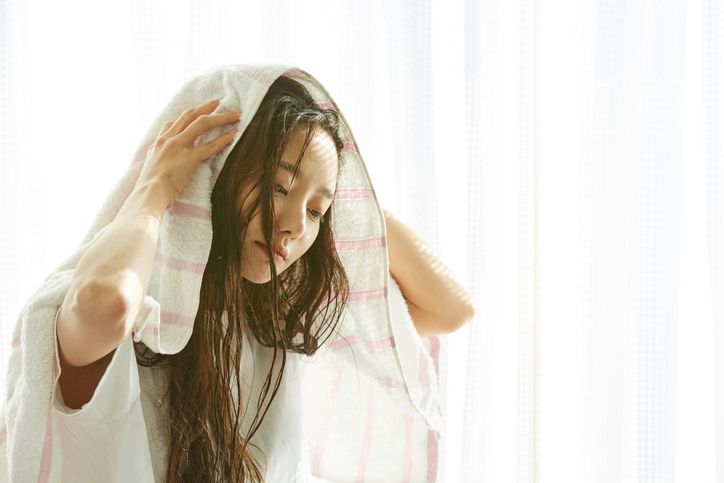
Stripping away natural oils
Washing hair frequently with strong shampoos can damage scalp health. Harsh formulas remove the natural oils that protect your scalp, causing sebaceous glands to produce excess oil. This rebound effect can clog hair follicles and lead to breakouts on the scalp or pimples on your scalp.
Irritating ingredients that stay behind
Many commercial shampoos include ingredients like sulfates, synthetic fragrances, or heavy conditioning agents. These can stick to your skin and trigger scalp acne, especially if they aren’t fully rinsed out. Leftover residue mixes with sweat, dead skin cells, and oil, which can block pores and create inflamed or swollen bumps.
Too much washing creates imbalance
Washing hair daily doesn’t give your scalp time to balance oil production. This may worsen scalp irritation and cause acne prone skin to flare up. For most people, washing hair two to three times a week is enough. Using non comedogenic shampoo and switching to scalp treatment options like salicylic acid or glycolic acid can also help unclog pores and reduce inflammation.
Treating scalp acne starts with choosing the right products and a hair care routine that protects your skin barrier. Avoiding daily use of aggressive cleansers can make a big difference in managing scalp acne symptoms.

Heavy Hair Styling Products and Build-up
Residue builds up and clogs pores
Hair styling products like serums, gels, waxes, and leave-in sprays often contain ingredients that coat the scalp. These include silicones, oils, and film-forming agents that don’t rinse away with regular shampoo. When used often, especially without deep cleansing, these products collect near the roots and clog pores. This buildup traps sweat, sebum, and dead skin cells—common triggers for breakouts on the scalp and scalp acne symptoms.
Skin irritation from trapped product layers
Sticky or waxy residue around the hairline is a sign of product buildup. This layer blocks proper skin cell turnover and creates an environment where bacteria grow easily. That leads to inflamed or swollen bumps, itching, and clogged hair follicles. People with acne prone skin or oily hair are more likely to develop scalp irritation or painful bumps from this kind of buildup.
Reducing buildup improves scalp health
Use fewer heavy styling products, and avoid applying them near the scalp. Focus on the hair strands only. To treat pimples and manage scalp acne, use a clarifying shampoo once or twice a month. Look for ingredients like salicylic acid or glycolic acid to help remove dead skin cells and unclog pores. This supports clean hair follicles, improves scalp treatment results, and lowers the risk of developing scalp acne.
Book Now to Experience
F8 Hair Regrowth Treatment
1 Minute Self-Registration
Date should not be before minimal date

Sweat, Hygiene, and Scalp Breakouts
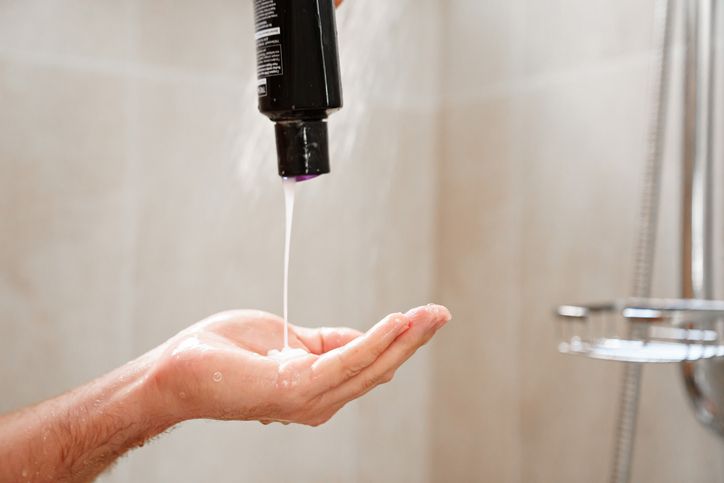
Sweat left on the scalp triggers breakouts
During workouts or hot weather, the scalp produces more sweat and oil. When left unwashed, this mixture traps bacteria, dead skin cells, and debris against the skin. These block the pores and clog hair follicles, causing scalp acne, scalp folliculitis, and inflamed or swollen bumps. The warm, damp environment also increases the risk of fungal infections and painful bumps, especially if you wear tight headwear.
Skipping regular washing worsens buildup
Poor scalp hygiene doesn't just come from workouts. Washing hair too infrequently allows natural oils, sebum, and product residue to build up. Over time, this creates a dense layer that blocks skin cell turnover and triggers acne breakouts or scaly patches. It can also lead to more severe scalp acne symptoms if not treated.
Consistent cleansing helps prevent acne
Wash hair regularly based on how oily your scalp gets. If you exercise often or have oily hair, you may need to cleanse more frequently to keep the scalp clean. When immediate washing isn’t possible, dry shampoo or scalp wipes can help absorb excess oil and sweat. Anti dandruff shampoo or formulas with salicylic acid can remove dead skin cells and support scalp health. Avoid tight hats during workouts, and clean them often to prevent transferring bacteria back onto your scalp.

Incorrect Hair Washing Technique
Poor technique leads to leftover residue
Many people focus on which hair products they use but overlook how they wash their hair. Incomplete rinsing or rushing through the process can leave shampoo, conditioner, or styling product behind. These leftover substances trap oil and dead skin cells, clogging pores and triggering breakouts on the scalp.
Common mistakes during washing
Rinsing too quickly
Failing to rinse thoroughly leaves product on the scalp. This buildup contributes to clogged pores and scalp acne.
Using nails to scrub
Scratching the scalp with fingernails can irritate the skin, cause microtears, and increase inflammation. It also spreads bacteria, leading to scalp irritation and acne breakouts.
Washing with hot water
Hot water strips away natural oils and can overstimulate the sebaceous glands. This leads to excess oil production, which blocks hair follicles and worsens mild scalp acne.
Simple changes improve skin health
Use your fingertips to massage the scalp gently in small, circular motions. Start at the base of your neck and move forward, reaching all areas. Always rinse until the water runs completely clear. Use lukewarm water to avoid stripping the scalp’s natural barrier. These steps help prevent scalp acne, remove dead skin cells, and reduce the chance of developing inflamed or swollen bumps.

Dirty Hair Tools and Accessories
Tools transfer bacteria to the scalp
Hairbrushes, combs, and clips collect dead skin cells, sebum, and product residue over time. When these tools aren’t cleaned regularly, they carry bacteria and other buildup that transfer straight onto the scalp with every use. This can clog pores, irritate the skin, and trigger scalp pimples or persistent acne breakouts.
Impact of unclean accessories on scalp health
Using dirty tools repeatedly exposes the scalp to old oils and styling products. This increases the risk of scalp folliculitis, scalp acne symptoms, and itchy, inflamed bumps near the hairline or neck. Sharing brushes or using worn-out tools can also spread bacterial or fungal infections, especially on acne prone skin or sensitive skin.
Cleaning tools reduces breakouts
Disinfect brushes, combs, and accessories weekly. Wash them with warm water and a gentle, non comedogenic shampoo to remove buildup. Use alcohol wipes on clips, pins, and hot tools to reduce bacteria. Replace old brushes every 6 to 12 months. Store everything in a dry place to prevent mold or bacterial growth. These small steps help prevent scalp acne, support skin health, and protect your hair follicles from unnecessary irritation.
Book Now to Experience
F8 Hair Regrowth Treatment
1 Minute Self-Registration
Date should not be before minimal date

Using Products That Irritate the Scalp
Harsh ingredients trigger inflammation
Many hair products contain ingredients that can irritate the scalp, especially if used often. These include strong fragrances, alcohols, and comedogenic oils that block pores and disrupt oil production. For people with sensitive skin or acne prone skin, regular exposure can lead to painful bumps, scalp acne, or even cystic acne.
Common signs of product irritation
Symptoms of scalp acne caused by irritating products often include redness, itching, flaking, and breakouts along the hairline or crown. In some cases, these symptoms may be confused with conditions like seborrheic dermatitis or scaly patches, but the cause may simply be product sensitivity.
Choosing gentler alternatives for better scalp health
Switch to oil free or non comedogenic shampoo and conditioners. Look for labels that mention salicylic acid, tea tree oil, or glycolic acid—these help unclog pores and reduce inflammation. Avoid applying products directly to the scalp unless they’re meant for scalp treatment. Reducing contact with pore-clogging or fragrance-heavy formulas helps prevent scalp acne and supports long-term scalp health.

Hormonal Fluctuations and Scalp Acne
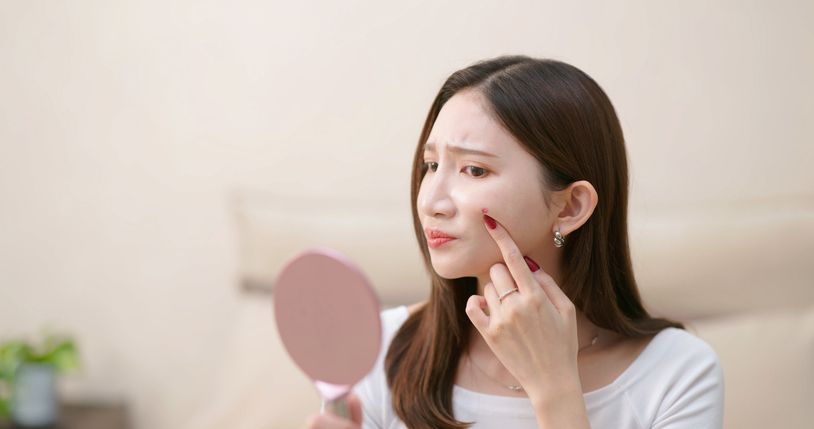
Changes in hormones increase oil production
Hormonal shifts can cause the sebaceous glands to produce excess oil. This is common during puberty, menstrual cycles, pregnancy, or times of high stress. More oil means a higher chance of clogged pores and breakouts on the scalp, especially if the scalp isn’t kept clean or if products trap the oil against the skin.
Impact on acne prone and sensitive skin
People with acne prone skin often see flare-ups during hormonal changes. These breakouts may appear as painful bumps or scalp pimples around the crown, hairline, or nape of the neck. In more severe cases, it may lead to scalp folliculitis or persistent acne that doesn’t respond to standard scalp acne treatment.
Managing scalp acne during hormonal shifts
Use medicated shampoos with ingredients like salicylic acid or benzoyl peroxide to reduce oil and unclog pores. Stick to a hair care routine that supports skin health and avoids irritating or comedogenic products. For those with ongoing or severe acne, topical medications or oral antibiotics may help manage symptoms and prevent permanent hair loss from prolonged inflammation.

Delayed Treatment of Scalp Acne
Ignoring early symptoms worsens inflammation
Small bumps or itching might not seem serious at first, but untreated scalp acne can spread or become infected. Delaying treatment increases the risk of developing severe acne or scalp folliculitis. This can damage hair follicles and cause permanent hair loss in some cases.
Early care reduces long-term damage
Using the right scalp acne treatment early—such as medicated shampoos, benzoyl peroxide washes, or topical antibiotics—can prevent buildup and reduce inflammation. For persistent acne, oral antibiotics or stronger topical medications may be needed. Acting early protects your scalp from long-term irritation and supports healthy skin recovery.
Book Now to Experience
F8 Hair Regrowth Treatment
1 Minute Self-Registration
Date should not be before minimal date

Diet and Its Impact on Scalp Acne
Certain foods affect oil production
A diet high in processed sugar, dairy, and refined carbs may increase sebum production, especially in people with acne prone skin. These foods can spike insulin levels, which may stimulate the sebaceous glands to produce excess oil. This buildup of oil on the scalp can clog hair follicles and trigger scalp acne symptoms like bumps, redness, and irritation.
Poor nutrition slows skin recovery
Lack of essential nutrients such as zinc, vitamin A, and omega-3 fatty acids can weaken skin repair and worsen inflammation. Without the right nutrients, the scalp may become more reactive to irritation, leading to more frequent or severe acne breakouts.
Eating habits that support skin health
A balanced diet rich in vegetables, lean protein, whole grains, and healthy fats helps reduce inflammation and support skin cell turnover. Staying hydrated and reducing intake of high-glycemic foods may help manage scalp acne over time. While diet alone won’t treat pimples on your scalp, it plays a supporting role in long-term scalp health.

Scalp Acne vs. Other Scalp Conditions
Scalp acne is often confused with other issues
Scalp acne may look like other common scalp problems, such as seborrheic dermatitis, ingrown hairs, or folliculitis caused by fungi. These conditions also cause redness, bumps, and irritation, but require different treatments. Misidentifying symptoms can delay proper care and make breakouts worse.
Key differences to look for
• Scalp acne: Pimples, blackheads, or whiteheads often surrounded by oil or residue buildup.
• Seborrheic dermatitis: Scaly patches, flaking, and itching, especially near the hairline and eyebrows.
• Fungal folliculitis: Small, itchy bumps that may spread quickly, often caused by yeast overgrowth.
• Ingrown hairs: Bumps with a visible trapped hair, often inflamed but not oily.
Confirming the cause improves results
If over-the-counter scalp acne treatments don’t help, see a dermatologist. Identifying the root cause ensures the right treatment—whether it’s topical antibiotics, antifungal medications, or a change in your hair care routine. Proper diagnosis helps avoid permanent hair loss or persistent acne that doesn’t respond to typical solutions.

Recommended Ingredients for Treating Scalp Acne

Benefits of Salicylic Acid for Scalp Health
Salicylic acid breaks down excess oil and loosens dead skin cells that clog hair follicles. It helps manage scalp acne, dandruff, and early symptoms of seborrheic dermatitis.
Usage: Use a salicylic acid shampoo two to three times a week. Massage it into the scalp and leave it on for a few minutes before rinsing to allow it to clear buildup. Limit use on sensitive skin to avoid dryness or irritation.
Effect of Benzoyl Peroxide on Bacteria and Oil
Benzoyl peroxide reduces oil and eliminates acne-causing bacteria. It is effective for inflamed bumps, scalp folliculitis, and persistent breakouts on the scalp.
Usage: Apply to affected areas before washing. Leave on for five to ten minutes, then rinse thoroughly. Limit use to once or twice weekly to prevent dryness or irritation. Use with caution near colored fabrics, as it may cause bleaching.
Tea Tree Oil as an Antimicrobial Scalp Treatment
Tea tree oil contains natural antifungal and antibacterial properties. It helps reduce itching, scalp irritation, and buildup that clogs pores.
Usage: Add a few drops of diluted tea tree oil to shampoo, or use a product that includes it. Avoid direct application of undiluted oil to prevent sensitivity or dryness.
Benefits of Glycolic Acid for Scalp Exfoliation
Glycolic acid exfoliates the scalp, removes product residue, and improves skin cell turnover. It helps reduce clogged pores and support a cleaner scalp surface.
Usage: Apply glycolic acid treatments once or twice weekly to a dry scalp before shampooing. Leave on for up to ten minutes, then rinse thoroughly. Avoid using on broken skin or combining with other strong exfoliants.
Best Practices for Product Use
• Avoid layering active ingredients like glycolic acid and salicylic acid in the same routine
• Introduce one active at a time to track skin response
• If dryness occurs, apply a lightweight, oil free scalp serum between treatments
• Use products consistently but avoid overuse, especially if the scalp becomes red or flaky
These ingredients support skin health, unclog pores, and reduce inflammation linked to scalp acne. For persistent or severe symptoms, consider topical or oral medications under dermatological care.
Book Now to Experience
F8 Hair Regrowth Treatment
1 Minute Self-Registration
Date should not be before minimal date

Scalp Treatment That Supports Clearer Skin and Healthier Hair
Scalp breakouts don’t just affect skin comfort—they can also interfere with hair growth. Clogged pores, excess oil, and inflammation around hair follicles reduce the scalp’s ability to support strong, healthy strands. That’s where the F8 Hair Regrowth Treatment comes in. This non-invasive scalp and hair therapy doesn’t just target hair loss—it also helps improve overall scalp health, making it easier to manage conditions like scalp acne, scalp irritation, and blocked follicles.
F8’s Role in Preventing and Managing Scalp Breakouts
The F8 Hair Regrowth Treatment combines low-energy laser technology with a nutrient-rich hair growth serum. Together, they help unclog pores, reduce sebum buildup, and calm irritated skin. These steps are important in treating scalp acne and preventing clogged hair follicles that lead to inflamed or swollen bumps.
Many people dealing with pimples on the scalp or symptoms of scalp acne also experience increased oil production or poor circulation in the scalp. The F8 system improves microcirculation by strengthening the capillaries around the follicles, which helps reduce oil accumulation and supports healing. As a result, the scalp becomes a cleaner, less reactive environment—ideal for both preventing breakouts and encouraging hair regrowth.
How the Treatment Works
The session begins with a scalp assessment under high magnification to identify buildup, irritation, and overall hair follicle condition. Once the areas are identified, the therapist applies low-energy laser stimulation to activate the hair papilla and support blood flow. After this step, a specialized serum is applied across the scalp to cleanse, hydrate, and regulate oil production. The laser improves absorption, allowing the serum to reach deeper layers of the scalp.
Benefits of F8 for Acne Prone and Sensitive Scalps
• Non-invasive and comfortable: No needles, no recovery time. Safe for acne prone skin and sensitive scalps.
• Reduces buildup: Clears out pore-blocking residue and dead skin cells that contribute to scalp acne.
• Balances oil and hydration: Regulates sebum while hydrating the scalp, helping prevent both dryness and excess oil.
• Improves blood circulation: Strengthens capillaries and boosts nutrient flow to hair follicles.
• Suitable for both men and women: Gentle enough for regular use on all scalp types.
F8 doesn’t replace daily scalp care, but it can greatly enhance the results of your scalp acne treatment and help maintain a clean, balanced environment that supports hair growth.
Book a consultation today to see how the F8 Hair Regrowth Treatment can support a healthier scalp and reduce breakouts.Book Now to Experience
F8 Hair Regrowth Treatment
1 Minute Self-Registration
Date should not be before minimal date
FAQ
Can scalp acne cause permanent hair loss?
Yes, in some cases. Severe scalp acne or untreated scalp folliculitis can damage the hair follicles over time. If inflammation becomes chronic, it may weaken the follicles and lead to thinning or even permanent hair loss. Early treatment using scalp acne treatment products or professional therapies like F8 Hair Regrowth Treatment can reduce inflammation and protect hair follicles from long-term damage.
Are there specific hair products that trigger breakouts on the scalp?
Yes. Hair products that contain heavy oils, silicones, or synthetic fragrances can clog pores and lead to pimples on your scalp. These ingredients trap excess oil and dead skin cells near the follicles, which can worsen scalp irritation. Choosing a non comedogenic shampoo and avoiding direct application of thick serums or waxes to the scalp can help prevent clogged pores and breakouts.
Is scalp acne connected to facial acne?
It can be. People with acne prone skin often experience breakouts on both the face and scalp. This may be due to similar triggers like hormonal fluctuations, high sebum production, or reactions to personal care products. Managing oil production and using targeted ingredients like salicylic acid or benzoyl peroxide on both areas can help reduce flare-ups.
How can I tell the difference between scalp acne and seborrheic dermatitis?
Scalp acne often appears as inflamed or swollen bumps, sometimes with pus or tenderness. Seborrheic dermatitis usually causes scaly patches, flaking, and redness, but not true pimples. Both can lead to scalp irritation and discomfort. If you're unsure, consult a professional to identify the condition and receive proper treatment recommendations.
Does poor diet contribute to developing scalp acne?
Yes, a poor diet may contribute. High intake of sugary foods, refined carbs, or dairy can increase sebum production and lead to clogged hair follicles. Nutrient deficiencies can also slow down skin healing. Following a balanced diet that supports skin health can reduce the risk of developing scalp acne and improve overall scalp condition.
Recommended Articles
COPYRIGHT© NEW BEAUTY MANAGEMENT LIMITED 2025. ALL RIGHT RESERVED.

